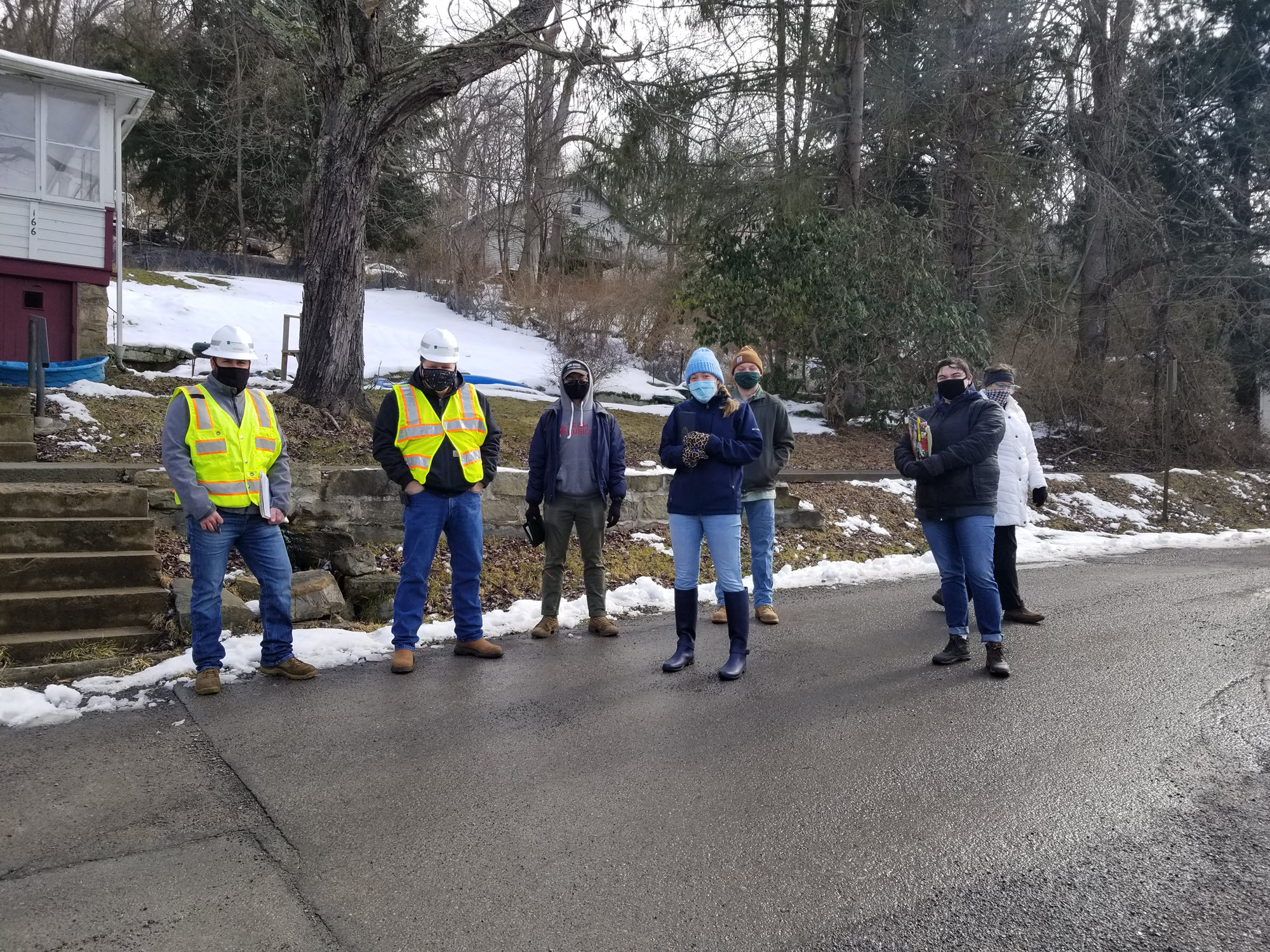 Greg Scott
Greg Scott Foxburg, Pennsylvania, is not a big place – population 157 at last count – but that doesn’t mean it doesn’t have big infrastructure needs.
The Foxburg Town Council has been working on a redevelopment project, and Community Engineering Corps – including several ASCE members – stepped up with critical work on North Palmer Avenue in town.
“It was great working with the community and the council, doing site visits and learning about the problems they face as a small borough,” said Erin Feichtner, P.E., M.A.SCE, who helped connect the project to the ASCE Pittsburgh Section when she was then its president. “It was a great perspective on what small communities go through.”
CECorps works with communities to improve local infrastructure by providing pro bono engineering and technical solutions in parts of the United States that need help the most. ASCE was a founding partner of CECorps, joining the American Water Works Association and Engineers Without Borders–USA.
“I’ve always wanted to do an Engineers Without Borders project overseas but hadn’t the time,” said Gregory F. Scott, P.E., F.ASCE, another mainstay of the Pittsburgh Section who took a lead on the Foxburg project. “So when you suddenly have a similar opportunity locally, it’s just a great chance to help people.”
The ASCE members from the Pittsburgh Section partnered with student members from the University of Pittsburgh, as well as AWWA and EWB-USA volunteers to help make critical improvements to Foxburg, including grading work, curb and gutter, and stormwater infrastructure design.
“I’ve worked for nearly 30 years with a lot of small municipalities in Western Pennsylvania,” Scott said. “I've seen their challenges. The resources are limited. But the people who live there need safe roadways and reliable storm sewers, sanitary sewers and drinking water.”
As a senior program engineer for EWB-USA Natalie Celmo, P.E., M.ASCE, has been a unifying force for many CECorps projects, including Foxburg.
“There are so many communities that are left behind in terms of inequitable resource allocations,” Celmo said. “Now, there is a lot of infrastructure money that is coming out, and a lot of it is earmarked to be for underserved communities. However, the communities still don’t have the means or the resources to access those funds.
“The value of CECorps and why these projects are so valuable is that we can provide those free engineering services to help bridge the gap to those funding sources. A lot of those funding sources require an engineering report or a cost estimate. These communities can’t afford or don’t have access to engineers to get that engineering report or cost estimate to actually access the funds.
“The role that we play is extremely valuable and it’s a piece of the puzzle that often gets forgotten about or left behind. I’m so passionate about the work that we do because we are able to see those communities thrive, access these funds, and improve their infrastructure through the use of volunteers.”
The Foxburg project thrived on collaboration, particularly with the engineering students from Pitt.
Scott saw it as a unique opportunity for real-world learning.
“What an education for them along the way,” Scott said. “Many civil engineering graduate projects are something completely theoretical. ‘Here’s an abandoned steel mill site; you know, re-envision it.’ But there’s nobody actually pursuing that, so the students wind up showing what could be.
“Well, this was a real project that was happening.”
The students noticed.
“I thought it would be really cool to see a project get set up for real,” Bobby Skander, who was a senior design student at Pitt when he helped on the Foxburg project.
“I live close to the area, and I know how some projects on a large scale don’t seem like much but to a small community, it means the world. When talking to other companies they consider this small, but to the community, it could be huge.”
The project team gathered in Pittsburgh at the project’s end and drove the 90 or so miles north to Foxburg to meet with their community contact Karen Best and put a metaphorical bow on the work.
“It was really very special being able to visit the community,” Celmo said. “Karen made us brownies. [laughs] Being able to see the actual road and see the improvements that were made as a result of CECorps was really great to see.”
“And it’s a great experience for the volunteers. The volunteers are giving back to the communities and utilizing their engineering expertise to make a difference in these communities.”
Learn more about Community Engineering Corps and how you can participate.



